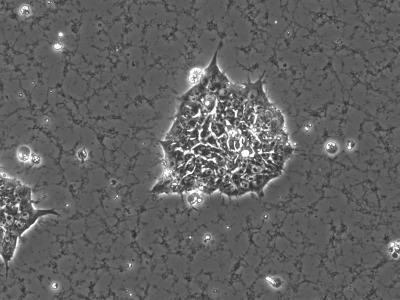Scientists from California have developed a substrate for growing colonies of stem cells, without requiring the animal material that has so far been used in these systems

Most of the researchers working with embryonic stem cells, the cells that can become any type of specialized adult cell in the human body (among others, nerve cells, heart cells, and insulin-producing cells) - use animal materials to grow the cells. However, since these substances are of animal origin, they may transfer viruses and other pathogens to the embryonic stem cells and make these cells unable to be used in medical applications.
Researchers from the University of California at Riverside have developed a new method for growing stem cells in a laboratory that does not use animal materials - an important advance towards the use of these cells in medicine. Thanks to their enormous potential, embryonic stem cells are considered a promising source for future cellular healing methods for the treatment of diseases such as Parkinson's and diabetes.
Noboru Sao, professor of biochemistry at the University of California has developed a new method that makes this possible. In the method accepted in laboratories today, scientists grow stem cells on gel-like proteins (Matrigel). These substances are extracted from tumors in mice, which also include extracellular matrices composed of specific proteins. The matrigel coating provides the scaffold on which the stem cells first attach and then grow in uniform colonies before differentiating into specialized cells.
"Developing a coating method that does not contain materials from animals for growing stem cells still remains a great challenge due to the complexity of the method and the lack of knowledge about the relationship between the control systems of the stem cells and the substrate" explains Sato, who headed the research team.
His lab identified specific signaling pathways called Rho-Rock that stem cells use during colony formation and that play an important role in the physical interaction between stem cells. When the researchers blocked the path, they discovered, as expected, that the process of creating the colony had gone awry. They also discovered that the stem cells retained their potential to differentiate into any cell.
"Until now, it was common to assume that the process of creating the colonies is essential for maintaining their potential," Sato said. "But now we have shown that this potential can be maintained separately from contact with other stem cells. "The research will advance both the understanding of the signaling pathways in stem cells and the development of improved methods for growing stem cells," said Pero Talbo, director of the Stem Cell Research Center at the University of California at Riverside, the laboratory where Sato works.
Endless production of red blood cells
Scientists have reported that they have succeeded in producing red blood cells from human embryonic stem cells. This is an important step on the way to creating reserves of red blood cells for transplantation purposes. Red blood cells are an extremely important component of the human body as they carry oxygen to all parts of the body, the ability to develop such cells will ensure huge reserves of blood cells and eliminate the dependence on blood donations.
Experts in the field claim that this is an important advance, but warned that the technology is not yet at the application stage and that there are still many problems that must be solved, before we can produce reserves of red blood cells.
The study was conducted by researchers from several universities in the USA. The researchers reported that the cells produced behaved like red blood cells in laboratory tests. They wrote that the meaning of the results of the experiments is that embryonic stem cells could be used in the future as a production line from which blood cells will be produced for patients with type O negative blood.
The next step is to check whether the technology is efficient enough to produce blood cells in large quantities, and whether these blood cells can survive outside laboratory conditions long enough to be inserted into a human body and fulfill their purpose. The life span of red blood cells is 120 days on average.
